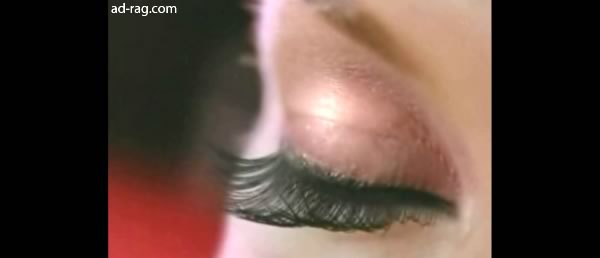
Rimmel gets banned for not keeping it real.
The ASA found the Rimmel magazine advertisement featuring Moss in breach of advertising rules. The TV commercial broke rules relating to misleading evidence.
The advertising agency J Walter Thompson said Moss's eyelashes had been "cleaned up and enhanced". But it did not explain how the appearance of the model's lashes had been changed.
Rimmel has become the latest cosmetics brand to fall foul of the advertising watchdog for a misleading mascara advertisement - this time for claiming in a Kate Moss advert that its product gave 70% more lash lift.
The ruling from the Advertising Standards Authority is similar to the criticisms of Avon last month and L'Oreal in July, on the issue of fake eyelashes.
The television and magazine ad for Rimmel's Magnif'eyes featured Kate Moss. Viewers and readers challenged that they believed Ms Moss to be wearing fake eyelashes, while the Advertising Standards Authority demanded evidence of 70% lash lift.
Rimmel's advertising agency, J Walter Thompson admitted to touching up the image in post-production. It denied that the model was wearing false eyelashes, but the ASA objected that JWT provided no documentary evidence that false eyelashes were not used.
On this point, the TV ad breached the advertising code for clauses covering misleading advertising and evidence, while the magazine ad failed on the basis of truthfulness and substantiation, the ASA said.
To prove its claim of 70% more lash lift, Rimmel submitted consumer research and laboratory tests. The company said it tested its brush on 10 female panelists, with digital imagery showing a 74.7% average increase in lash lift from root to tip.
The Broadcasting Advertising Clearance Centre had passed the TV ad, saying the demonstration sequences were an accurate reflection of the capabilities of the product and supported the claims made in the TV ad.
However, the ASA ruled that some consumers could be misled, because they might interpret the claim to refer to an increase in actual lash length, rather than the length of the lashes as they appear in digital images.
The watchdog told Rimmel not to repeat the advert and advised them to use a disclaimer in future ads when post-production image manipulation or false lashes were used.
Clarins was also recently rapped for its skin cream ads, which the ASA found to be misleading and exploitative of women's fears about ageing.
Beauty company Rimmel had its hand slapped by Britain's Advertising Standards Agency after the watchdog group found that images of Kate Moss's eyelashes had been "digitally cleaned up and enhanced" in ads for the brand's "Magnif'Eyes" mascara. The ASA insists the makeup ads' claims to provide wearers "70 percent more lash lift" were misleading and demanded proof that Moss was not wearing false eyelashes in the images and television ads.
The lash flap came just a few months after L'Oreal was criticized for allowing Penelope Cruz to wear falsies in an ad for their mascara. The ASA is asking that future ads include a disclaimer regarding the enhancements, which seems to suggest they have serious doubts about the intelligence of women who read women's magazines and the ads therein.
Penelope Cruz & L'Oreal got the same bad rap!
http://www.abc.net.au/news/stories/2007/07/26/1988986.htm
- reply
Permalink